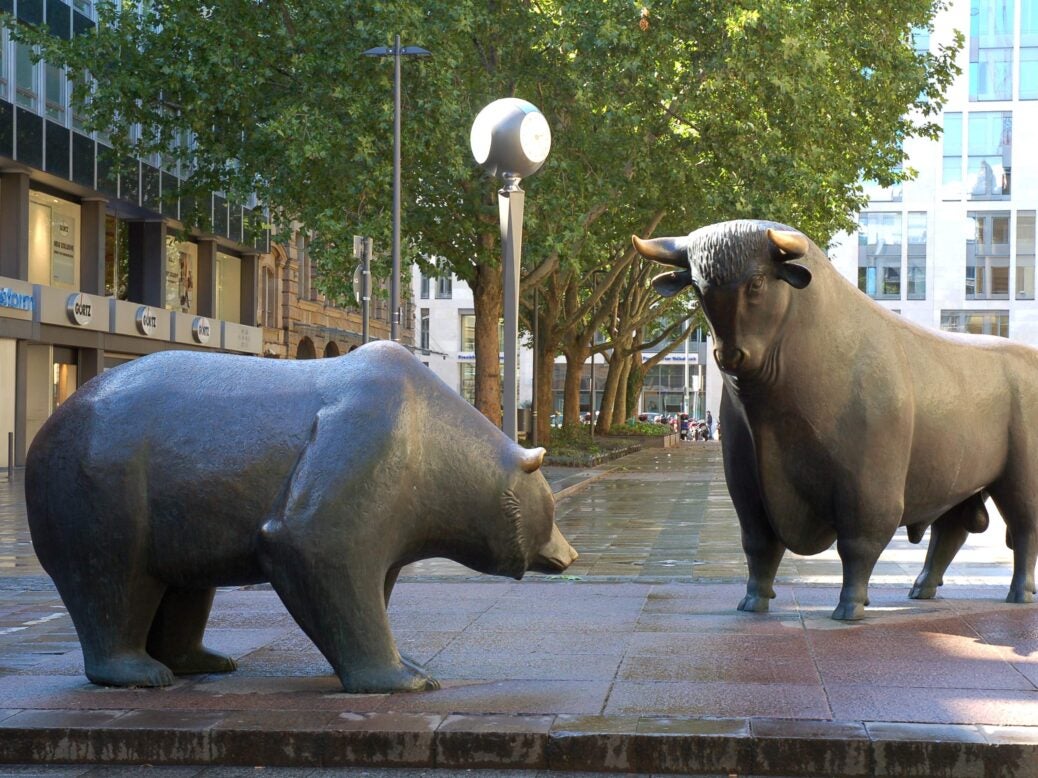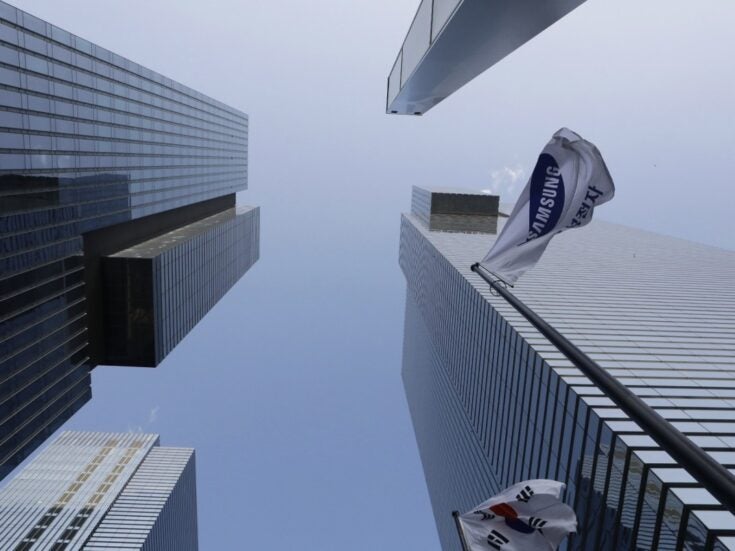
It’s official – the bull market hit the grand old age of 3,454 days today, marking the longest period of uninterrupted gains in recent history. However, David Dawkins finds caution in the air as wealth managers warn that the ageing bull is now in the ‘late stages’ of its life cycle.
Barring an unlikely wobble and collapse, the bull market will extend what is now the longest-ever run in history into the mid-term territory of the most controversial US Presidency in history.
The President’s golden-haired bull pushed US stocks to an all-time high on Tuesday with the S&P 500 breaking through 2,872.87, boosted on the one hand by President Trump’s tax cuts, and unmoved by Trump’s global trade tensions.
But there’s a real sense that this bull run – best understood as being the longest stretch in history of rising share prices without a 20 per cent drop – hasn’t been quite as good as it could have been. And now, as thoughts turn to the bear’s arrival, the private wealth world is keen to acknowledge the vulnerability of what’s often described as the ‘most hated bull run in history’.

Photo credit Carlos Delgado @WikipediaCommons
The bull’s humble life started after the global financial system narrowly avoided total collapse in 2008 and sunk to a new low in March 2009. However, despite the reassuring recovery from a toxic debt crisis, returns are down, with the FT reporting this week that average annual gains of the post-crisis bull are a mere 16.5 per cent, compared with a historic average of 22 per cent for bull markets.
Add to this the index’s approximate 325 per cent returns this cycle falling well short of the 417 per cent gain during the previous record-setting bull market in the 1990s, and it’s perhaps understandable why positivity has been replaced by a collective shrug of the shoulders.
Today’s column inches mirror this fundamentally negative tone with the Daily Telegraph claiming, ‘the only way is bust’, while the Wall Street Journal’s prominent opinion piece is unapologetically titled – ‘Calling Bull on the Longest Bull Market’.

Photo credit Max Pixel @WikipediaCommons
The press’s pessimism is mirrored by those in the wealth world with Roger Jones, Head of Equities at London and Capital telling Spear’s that we are currently in a late cycle market and leading indicators are ‘starting to look concerning’. According to Jones, high expectations and high valuations – markets are ‘vulnerable’, while Penny Lovell, CEO of Sanlam’s Private Investment Office says that ‘like many’ in the wealth world, ‘we consider this bull market to be in the late stages of its life cycle’.
But why the negativity? James Penny, senior investment manager at Greenfinch told Spear’s that despite its obvious enduring qualities ‘it’s not called the most hated bull run in history for no reason’.

Photo credit Rafael Matsunaga @WikipediaCommons
Penny says, ‘it’s been a slow steady grind with very little to get excited about. Investors have been unable to get really motivated about markets and there’s little in the way of prolonged positivity before politics or news headlines have us hunkering down again.’
On politics and the dreaded ‘R’-word, the Greenfinch manager says that despite Trump’s determination to drag the US into a trade war with China, at the moment the ‘classic warning signs of a recession are still in the distance’.
Will Hobbs, head of investment strategy at Barclays smart investor, also brings the dreaded ‘R’ word to the table, even if it is just to concede that despite bear markets and recessions often walking hand-in-hand, ‘while the economy continues to grow, the bull run should continue’.
However, the general sentiment across the news media is that a turn from bull to bear is on the horizon. So how can HNWs prepare for such a turn? Does the oft-touted trope – for diversification, diversification and – you guessed it – diversification, risk just leading managers to turn left, left and left again and arrive right back where they started with a portfolio ill-prepared for what’s to come?
Hobbs told Spear’s that, ‘having a portfolio that is designed specifically to weather recessions and bear markets is one of the most common, but understandable, investing mistakes of this economic cycle.’ He adds that the truth of the world economy and its related capital markets is that growth is the norm not the exception. Recessions, he says, have been becoming less frequent and severe over time as we have progressively developed a stronger institutional framework to blunt the recessionary bullets.
The data backs this up, broadly speaking with recessions being a part of life 50 per cent of the time before 1700, before dropping to 30 per cent of the time since 1700 and only 17 per cent of the time since 1900.
The Barclays chief told Spear’s: ‘Long term investors should simply ignore recessions and focus on the prospects for growth, which remain reliably founded on people’s continuing restlessness and ingenuity.’
However, one final thought while we’re on the subject of ‘continuing restlessness’ (but perhaps less so on ‘ingenuity’) President Donald Trump looms large over this bull market, with his determination to leverage market continuity for a better negotiating position come talks, threatens to drag the globe into increasingly protectionist measures that could well trigger the turn from bull to bear.
But here’s a terrifying thought: maybe’s he’s due a little credit.
Nobel Prize-winning economist Robert Shiller certainly thinks so and credits President Donald Trump’s pro-business influence on keeping the bull market he inherited going strong and long.
Shiller told TV news this week, ‘there is a sort of optimism about the markets under Trump, and that’s continuing. I don’t see a reason for it about to change,’ the Yale professor added, ‘there’s something about how the world is reacting to the president. Something about his self-confidence which is gradually lifting our spirits…’
Our animal ‘spirits’? Gulp.
Main photo: Eva. K Wikipedia Commons
By the same author…
HNWs and crypto investment: closer than you think?
The plummeting pound: why diversification matters for HNWs
Bank of England, boyfriends and Brexit: rate rise reaction






